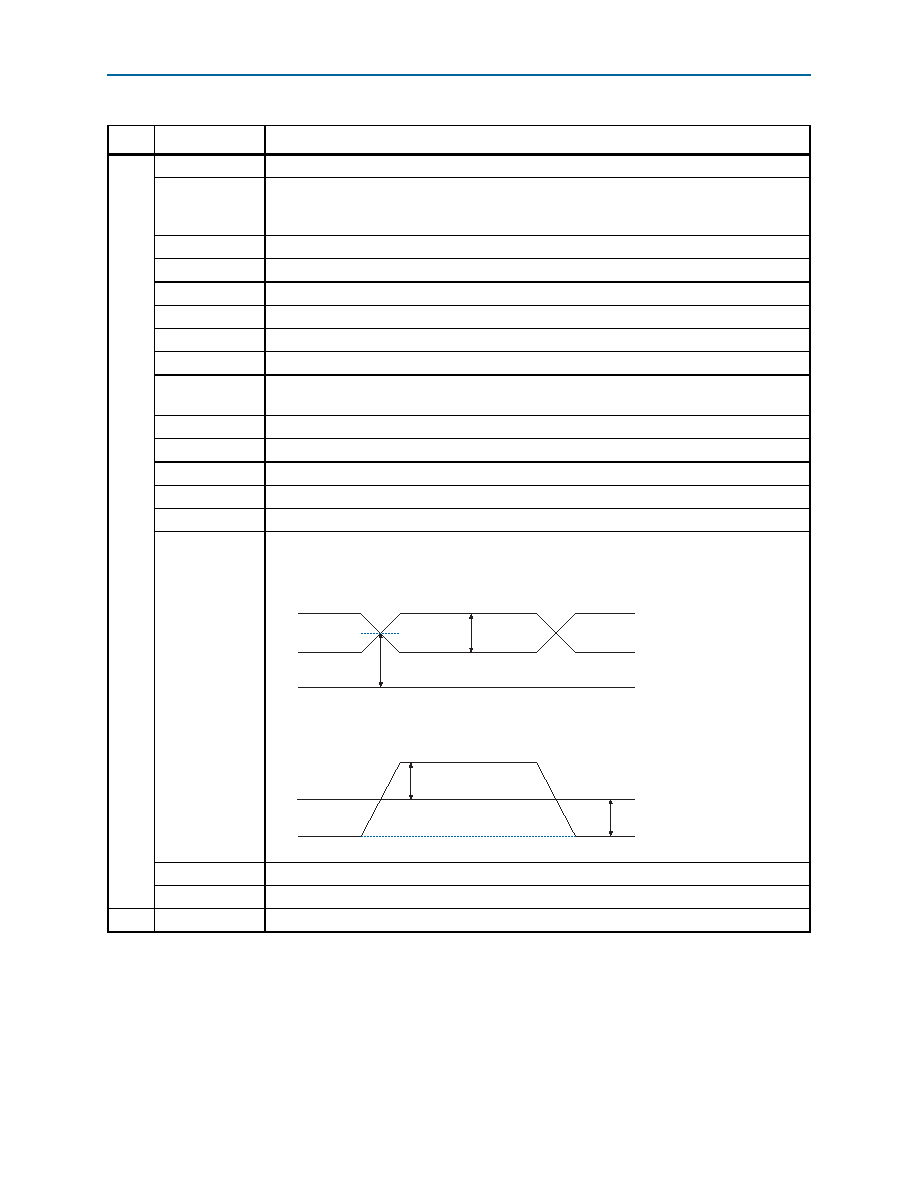
1–40
Chapter 1: Cyclone IV Device Datasheet
Glossary
December 2013
Altera Corporation
T
tC
High-speed receiver and transmitter input and output clock period.
Channel-to-
channel-skew
(TCCS)
High-speed I/O block: The timing difference between the fastest and slowest output edges,
including tCO variation and clock skew. The clock is included in the TCCS measurement.
tcin
Delay from the clock pad to the I/O input register.
tCO
Delay from the clock pad to the I/O output.
tcout
Delay from the clock pad to the I/O output register.
tDUTY
High-speed I/O block: Duty cycle on high-speed transmitter output clock.
tFALL
Signal high-to-low transition time (80–20%).
tH
Input register hold time.
Timing Unit
Interval (TUI)
High-speed I/O block: The timing budget allowed for skew, propagation delays, and data
sampling window. (TUI = 1/(Receiver Input Clock Frequency Multiplication Factor) = tC/w).
tINJITTER
Period jitter on the PLL clock input.
tOUTJITTER_DEDCLK
Period jitter on the dedicated clock output driven by a PLL.
tOUTJITTER_IO
Period jitter on the general purpose I/O driven by a PLL.
tpllcin
Delay from the PLL inclk pad to the I/O input register.
tpllcout
Delay from the PLL inclk pad to the I/O output register.
Transmitter
Output
Waveform
Transmitter output waveforms for the LVDS, mini-LVDS, PPDS and RSDS Differential I/O
Standards:
tRISE
Signal low-to-high transition time (20–80%).
tSU
Input register setup time.
U
——
Table 1–46. Glossary (Part 4 of 5)
Letter
Term
Definitions
Single-Ended Waveform
Differential Waveform (Mathematical Function of Positive & Negative Channel)
Positive Channel (p) = V
OH
Negative Channel (n) = V
OL
Ground
VOD
V
OD
V
OD
0 V
Vos
p
- n
